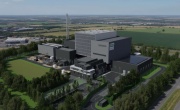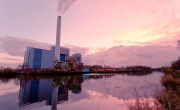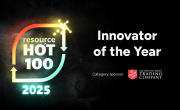Northern Ireland recycling rate up two per cent
Northern Ireland has seen a two per cent increase in its recycling rate, according to Stormont’s latest quarterly figures.
Statistics published by the Department for Agriculture, Environment and Rural Affairs (DAERA) on 27 April showed an increase in household recycling for the period from October to December 2016, compared to the same period in 2015.
The recycling, reuse and composting rate for household waste collected during this time was 42.1 per cent, or 94,246 tonnes, an increase of two per cent.
During this period, Northern Ireland’s 11 local authorities collected 228,681 tonnes of municipal waste, down 0.6 per cent from the previous year. Household waste accounted for 89 per cent of the total waste collected.
Every Northern Irish local authority either increased or maintained its household recycling rate, except Belfast, where the rate dropped from 39 per cent in October to December 2015, to 37.1 per cent in the same period in 2016, while Ulster had the highest rate, recycling almost 50 per cent of its household waste.
Ards & North Down local authority saw the largest increase in their recycling rate, up by 9.7 per cent on 2015 figures, with an increased composting rate accounting for most of the improved figure, rising by 9.5 per cent to 26.9 per cent. The report explains that this increase can be attributed to the council’s recent implementation of a scheme that bans food waste from being disposed of in black bins, alongside an extension of the organic waste collection in the area.
There has also been a decrease in the amount of waste being sent to landfill, down from 40.1 per cent the previous year to 38.3 per cent, the lowest ever reported and almost half the recorded amount in 2006.
Northern Ireland is split into three sets of waste management groups, which produce, develop and implement Waste Management Plans for their areas of responsibility. Six councils in the east of the country make up arc21, two in the north the North West Regional Waste Management Group (NWRWMG) and the remaining three belong to no waste management group.
The recycling rates for both arc21 and NWRWMG, which together make up around 75 per cent of Northern Ireland’s population were both lower than the national recycling level, at 40.7 per cent and 39.8 per cent respectively.
Positive trend
These results build on the increase reported in the previous quarter’s statistics, signifying a positive trend for the country’s recycling.
It appears Northern Ireland’s recycling is going from strength to strength. In September 2016, Eunomia released its fourth Local Authority Recycling Carbon Index, showing Northern Ireland had improved its carbon savings by five per cent, overtaking England.
Wales also continues to dominate recycling tables with figures showing a steady increase in recycling rates, making it the third best in the world.
In contrast, England’s record has been less than exemplary. With a falling recycling rate and campaign groups such as Keep Britain Tidy saying it should ‘hang its head in shame’ over its poor performance, England continues to lag behind its neighbours.
The full report can be viewed on the DAERA website. 








